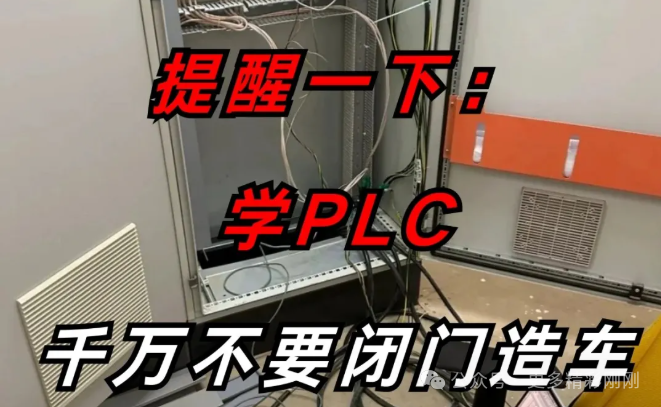
PLC System Planning: Full Lifecycle Management Strategy Reduces Equipment TCO by 35%!
Introduction
Hello everyone! Today, I want to share a secret that can revolutionize factory equipment management—the full lifecycle management strategy for PLC systems.Don’t be intimidated by this technical term, I will explain it in the most relatable way.Trust me, after adopting this method, your total cost of ownership (TCO) can drop by 35%!Want to know how to achieve this? Follow my lead and let’s explore together!
What is PLC Full Lifecycle Management?
Imagine you bought a car:
-
Traditional Approach: Only focus on refueling and maintenance, dealing with issues only when they arise
-
Full Lifecycle Management: Carefully plan every stage from selection, usage to decommissioning
PLC systems are no different! Full lifecycle management is a closed-loop management process fromselection design → installation and debugging → operation and maintenance → upgrades → decommissioning,like having a lifelong steward for your PLC!
<span>Highlighted Case</span>: A certain automotive factory extended the average service life of its PLCs from 8 years to 12 years through full lifecycle management,resulting in a direct 40% reduction in spare parts inventory costs!
Why is Full Lifecycle Management Necessary?
“Our equipment runs just fine with traditional methods, right?” First, check how many of these pain points apply to you:
-
Improper Selection: PLC performance is either excessive or insufficient,“either using a cannon to shoot a mosquito or a small horse to pull a big cart”
-
Chaotic Maintenance: Only scrambling to find schematics when a fault occurs,“spending 1 hour fixing equipment and 3 days looking for information”
-
Difficult Upgrades: Old systems are not expandable,“adding a feature is like trying to install Bluetooth on a black-and-white TV”
<span>Critical Data</span>: Companies adopting full lifecycle management see an average improvement of 22% in overall equipment effectiveness (OEE) and a 60% reduction in unexpected downtime!
Five Stages of Full Lifecycle Management
Stage 1: Precise Selection (Saving Money from the Source)
“Choosing the right PLC is half the battle” Remember these three golden rules:
-
Demand Matrix Method: List all I/O points, motion control, etc.,and evaluate using Excel scoring
-
Reserve for Expandability: Select based on 120% of current needs,just like considering future children when buying a house
-
Supplier Evaluation: Focus on assessing technical support capabilities,don’t just look at price!
<span>Highlighted Technique</span>: Use the **”TCO Calculator”** to compare the total costs of different brands over 10 years,one packaging factory found that Brand B was actually 27% cheaper than Brand A!!
Stage 2: Standardized Implementation (Laying a Solid Foundation)
“Chaotic installation = planting a time bomb” Must achieve:
-
Unified Document Templates: Including I/O lists, network topology diagrams, etc.,recommended to use Visio + Excel combination
-
Modular Programming: Use OB/FC/FB layered architecture,as flexible as building with Legos
-
Version Control: Use Git or SVN to manage programs,stop using file names like “final_version_modified_really_final_version”!
<span>Warning</span>: A certain chemical factory suffered mass damage to PLC modules due to improper grounding, resulting in losses exceeding 800,000!
Stage 3: Intelligent Operation and Maintenance (Letting Equipment Speak for Itself)
Say goodbye to “fixing it only when it breaks”, embrace these cutting-edge technologies:
-
Predictive Maintenance: Using vibration sensors + AI algorithms,predict motor failures 7 days in advance
-
Digital Twin: Simulate PLC operating status on a computer,like giving the equipment a CT scan
-
Remote Monitoring: Receive alerts via a mobile app,no more midnight runs to the factory
<span>Highlighted Case</span>: A certain food factory reduced its annual maintenance costs from 1.2 million to 680,000 after deploying an intelligent operation and maintenance system,achieving a 43% reduction!
Stage 4: Smooth Upgrades (Upgrading Without Power Outages)
“Old equipment can also have new tricks” Key strategies:
-
Hardware Compatibility List: Create a replacement reference table for new and old modules
-
Shadow Mode Operation: Test new and old systems in parallel,like having dual engines for backup in an airplane
-
Incremental Migration: Upgrade in segments by production line,don’t shut down the entire factory at once
<span>Critical Data</span>: Companies using shadow mode have reduced upgrade failure rates from 35% to below 6%!
Stage 5: Green Decommissioning (Extracting Last Value)
Decommissioning ≠ End Must do:
-
Data Erasure: Use specialized tools to thoroughly wipe programs,prevent formula leaks
-
Component Recycling: The aluminum casing and copper wires of PLCs are valuable,one factory earns 150,000 annually from recycling
-
Knowledge Accumulation: Write decommissioning reports,to avoid future generations falling into the same traps
Implementation Roadmap (Step-by-Step Guide)
-
Establish a Special Task Force: Include personnel from procurement, technology, and production
-
Current Status Assessment: Use the **”PLC Health Scorecard”** to diagnose existing issues
-
Develop a Three-Year Plan: It is recommended to start with operational optimization and gradually expand
-
Select Pilot Areas: Recommended to start with non-critical equipment like packaging lines
<span>Reminder</span>:Never attempt to upgrade all equipment at once! A certain company caused a three-day production halt due to this!
Interactive Questions
-
What is the average service life of PLCs in your factory? Have you conducted a TCO analysis?
-
What is the most troublesome issue you encounter in equipment maintenance?
-
If you were to implement full lifecycle management, which stage would you start with?
Conclusion
A 35% reduction in TCO is not magic, but a result of scientific full lifecycle management. Starting today,stop treating PLCs as a “black box”, and manage them with a systematic mindset, your factory will soon see amazing changes!
Friends who have already put this into practice are welcome to share your experiences in the comments; those who are still observing might start trying one of the small tips mentioned in the article. Remember: the greatest distance is from knowing to doing!
<span>Highlighted Benefit</span>: Follow and reply with “PLC List” to obtain the **”Full Lifecycle Management Checklist”and“TCO Calculation Template”**!
Share thisSave thisView thisLike this